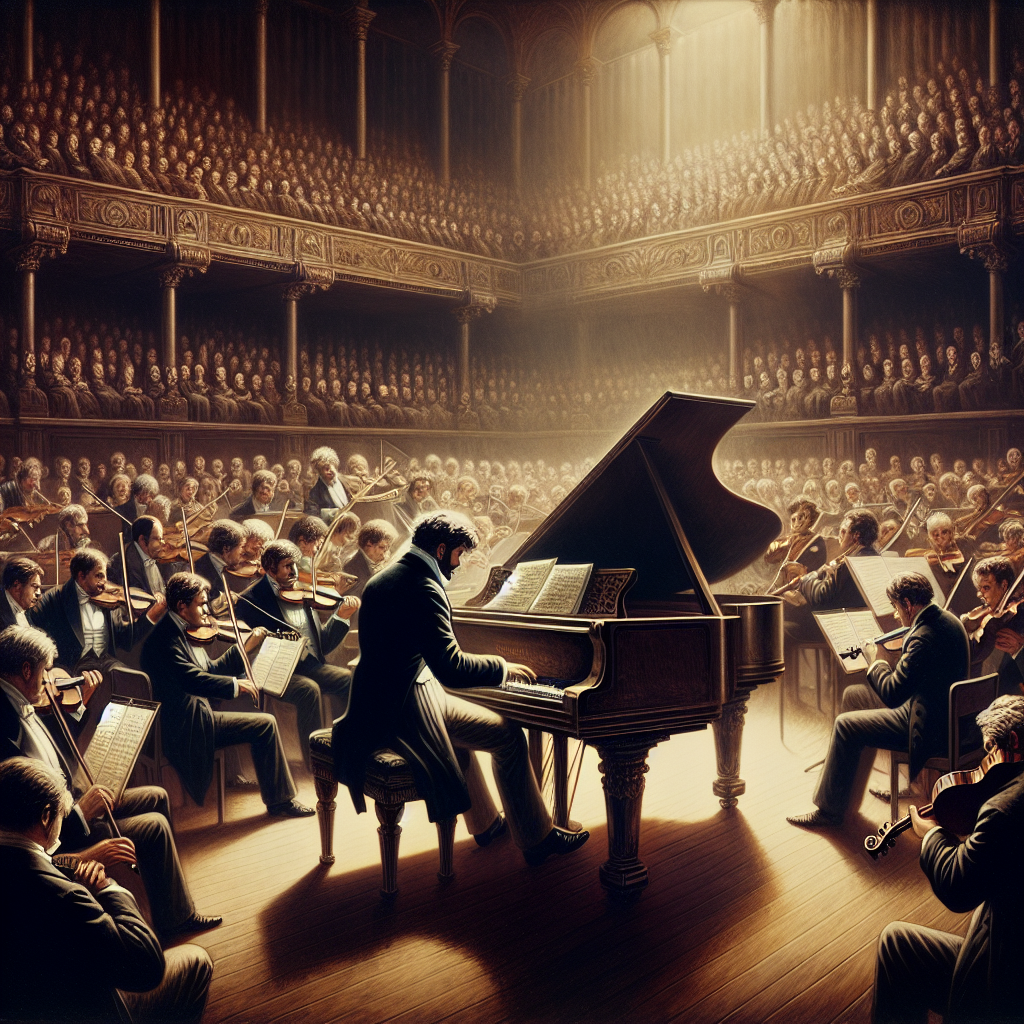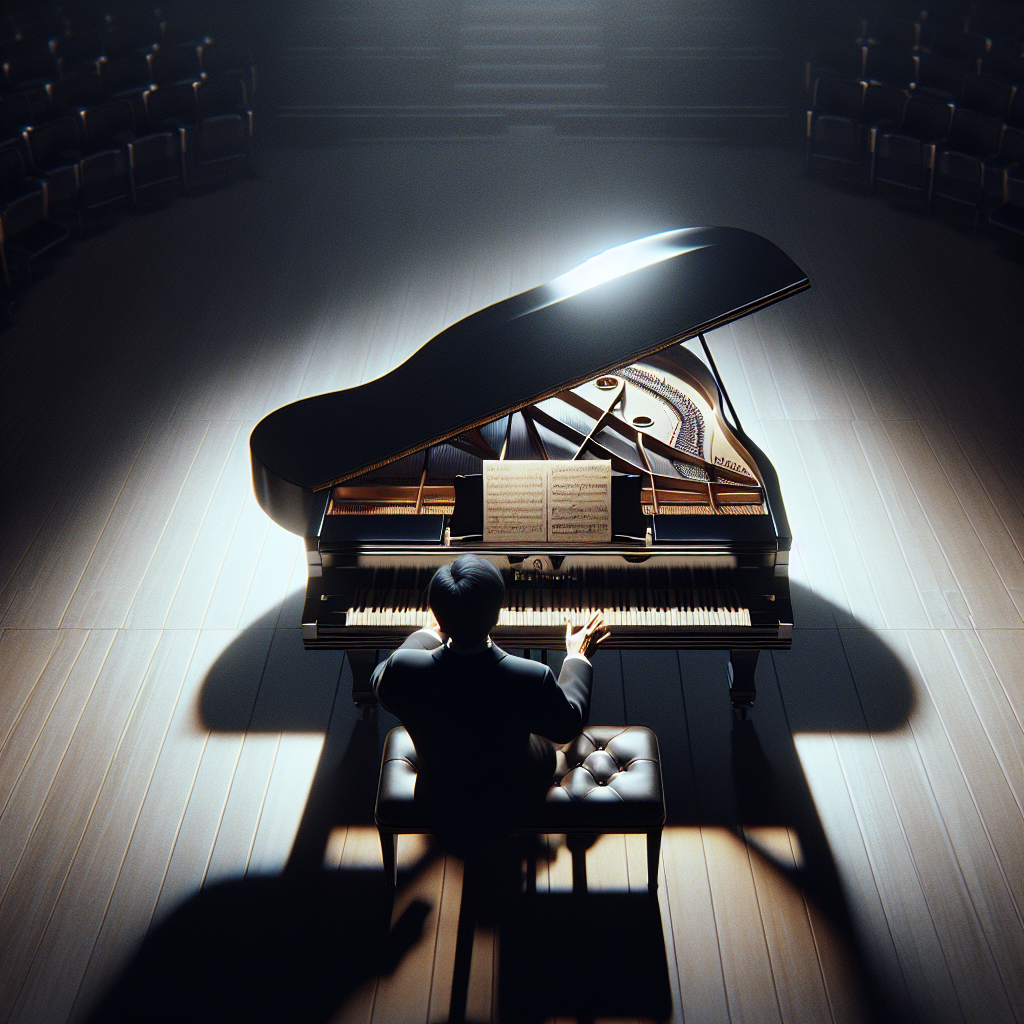
Piano Concerto No. 3 – A Pivotal Work in Beethoven’s Career
Ludwig van Beethoven remains one of the most prominent figures in classical music, renowned not only for his innovative compositions but also for his resolute spirit in overcoming personal adversities such as increasing deafness. Among his diverse and influential body of work, the Piano Concerto No. 3 in C minor, Op. 37 stands out as a crucial piece that signifies a transitional period in his musical journey. Written during a time when Beethoven was grappling with the onset of his hearing loss, this concerto captures his profound emotional depth, technical mastery, and visionary approach to composition.
Composed between 1800 and 1803, Piano Concerto No. 3 was premiered on April 5, 1803, with Beethoven himself performing the solo part at the Theater an der Wien in Vienna. This concerto is often regarded as a bridge between Beethoven’s early classical style, heavily influenced by Mozart and Haydn, and his later innovative and dramatic compositions that heralded the Romantic era. It is in this work that Beethoven begins to fully express his unique voice and the intensity of his inner experiences.
The Piano Concerto No. 3 consists of three movements, each showcasing Beethoven’s ingenuity in integrating the piano with the orchestra and pushing the boundaries of classical music. The first movement, Allegro con brio, is characterized by its dramatic intensity and complex interplay between the soloist and the orchestra. The serene Largo second movement provides a stark contrast with its lyrical and reflective qualities, while the final movement, Rondo: Allegro, exudes energy and concludes the piece on a vibrant and jubilant note. Through this concerto, Beethoven lays the groundwork for his subsequent groundbreaking compositions, establishing new possibilities for the concerto form and instrumental music.
The Historical Context
Understanding the historical context of Beethoven’s Piano Concerto No. 3 is essential to fully appreciate its significance. At the turn of the 19th century, Europe was undergoing significant social, political, and cultural changes. The Enlightenment ideals of individualism and emotional expression were giving rise to the Romantic movement, which would dominate the arts for most of the century. Beethoven was situated at the heart of these developments, residing in Vienna—a city that was then a vibrant cultural hub.
During the time he composed Piano Concerto No. 3, Beethoven was deeply influenced by the works of Mozart, particularly Mozart’s Piano Concerto No. 24 in C minor, K. 491. Beethoven viewed the composition of his third concerto as an opportunity to not just emulate but also to surpass the achievements of his predecessor. The key of C minor itself holds special significance, often associated with dramatic and stormy emotions in Beethoven’s oeuvre. The struggle and eventual triumph present in this concerto can be seen as a reflection of Beethoven’s internal battles and his persistence in the face of adversity.
This period also marked Beethoven’s gradual withdrawal from public life due to his worsening hearing condition. Despite his personal challenges, Beethoven’s productivity did not wane; instead, his music became a powerful medium through which he communicated his deepest sentiments and innovations. The premiere of the Piano Concerto No. 3 was itself an event of great importance, as it was part of a larger concert that included the debut of his Second Symphony and the oratorio “Christ on the Mount of Olives.” This concert solidified Beethoven’s reputation as a formidable composer and pianist and marked a pivotal moment in his career, showcasing his expanding musical vocabulary and his emotional resilience.
Structural Innovations
One of the key aspects that make Beethoven’s Piano Concerto No. 3 so remarkable is its structural innovations. Beethoven deviated from the conventional forms and expectations of the classical concerto, introducing greater complexity and depth. The first movement, Allegro con brio, follows the traditional sonata-allegro form but is notable for its dramatic contrasts and the intricate relationship between the soloist and the orchestra. From the very beginning, the orchestra presents a dark and intense theme, which is taken up and transformed by the piano. This movement highlights Beethoven’s skill in developing and manipulating themes, creating a sense of tension and release that keeps the listener engaged throughout.
The second movement, Largo, is a serene and expansive piece that uses a simple melody to explore a wide range of emotions. The piano here is more contemplative, almost as if it is engaged in a private reverie, with the orchestra providing a subtle and supportive background. This movement is a testament to Beethoven’s lyrical capabilities and his ability to craft music that is both intimate and profound.
The final movement, Rondo: Allegro, is lively and spirited, featuring a recurring theme that undergoes various transformations. The rondo form allows Beethoven to demonstrate his ingenuity in thematic development and variation. This movement is characterized by its rhythmic vitality and playful character, bringing the concerto to an exuberant conclusion. Throughout the concerto, Beethoven integrates the piano and orchestra in a way that was innovative for his time, treating them as equal partners in a dynamic and conversational interaction.

Technical Demands
Beethoven’s Piano Concerto No. 3 is also notable for its technical demands, which pushed the boundaries of what was expected of both soloists and orchestras at the time. The solo piano part is exceptionally challenging, requiring not only technical proficiency but also expressive nuance. The concerto opens with a powerful and intricate orchestral introduction, but it is the piano that dominates the narrative, engaging in a continuous dialogue with the orchestra.
The first movement, Allegro con brio, is particularly demanding, with its rapid octave passages, intricate arpeggios, and complex rhythmic patterns. The pianist must navigate these technical challenges while maintaining the dramatic tension and emotional intensity of the piece. The second movement, Largo, requires a different kind of virtuosity, focusing on the pianist’s ability to sustain long, lyrical lines and convey a wide range of emotional subtleties. The final movement, Rondo: Allegro, is marked by its brisk tempo and energetic character, demanding both precision and exuberance from the performer.
Beethoven himself was an accomplished pianist and wrote the concerto with his own performance capabilities in mind. However, he also envisioned the work as a testament to the evolving role of the piano in the concerto form. The technical and expressive demands of the concerto have made it a favorite among virtuoso pianists, who relish the opportunity to tackle its challenges and bring its rich emotional landscape to life. Modern performances continue to highlight the concerto’s enduring appeal and its capacity to showcase the talents of exceptional musicians.
Influence and Legacy
The Piano Concerto No. 3 had a profound influence on subsequent generations of composers and performers. It represents a turning point in the history of the piano concerto, paving the way for the more expansive and emotionally charged works of the Romantic period. Composers such as Johannes Brahms, Sergei Rachmaninoff, and Pyotr Ilyich Tchaikovsky drew inspiration from Beethoven’s innovative approach to the concerto form, building on his legacy to create their own masterworks.
The concerto’s emphasis on the deep, dramatic interplay between the soloist and the orchestra, as well as its exploration of new emotional and technical possibilities, set a new standard for the genre. Beethoven’s willingness to push the boundaries and explore new musical territories resonated with later composers, who saw in his work a model of artistic innovation and expressive depth.
In addition to its impact on the development of the piano concerto, Beethoven’s Piano Concerto No. 3 has continued to captivate audiences throughout the centuries. Its dramatic contrasts, lyrical beauty, and technical brilliance make it a perennial favorite in concert halls around the world. Modern performers and conductors continue to explore and reinterpret the concerto, bringing fresh perspectives to this timeless work.
Conclusion
Beethoven’s Piano Concerto No. 3 stands as a testament to his genius and his ability to transcend personal adversity to create music that continues to inspire and move audiences. Composed during a critical period in his life, the concerto embodies the emotional depth, technical mastery, and innovative spirit that characterize Beethoven’s work. It serves as a bridge between the classical traditions of his predecessors and the bold new directions of the Romantic era.
The concerto’s historical context, structural innovations, technical demands, and lasting legacy all contribute to its significance in the canon of classical music. Beethoven’s Piano Concerto No. 3 not only pushed the boundaries of what was possible in the concerto form but also set a new standard for emotional and expressive depth in instrumental music.
For both performers and listeners, the Piano Concerto No. 3 offers a profound and exhilarating journey through the landscapes of Beethoven’s musical imagination. Its enduring appeal is a testament to the timelessness of Beethoven’s artistry and the enduring power of his vision. As we continue to celebrate and perform this extraordinary work, we are reminded of the enduring impact of Beethoven’s genius and his ability to speak to the human experience through music.